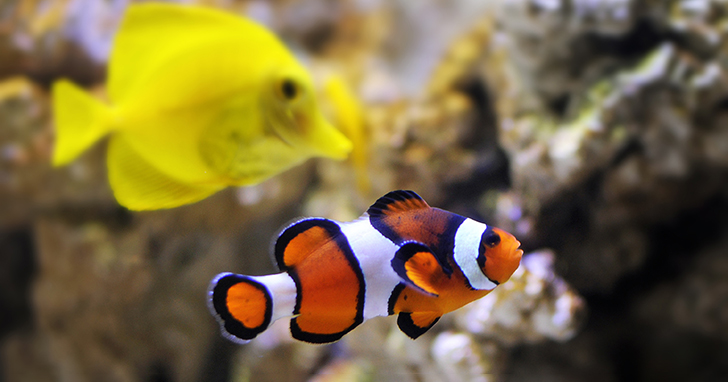Fish Tank Cycling Process: Avoid Common Mistakes in Aquarium Setup
Fish tank cycling is the process of converting harmful ammonia to nitrite, then eventually the nitrate. During this cycle beneficial colonies of bacteria form.
There are nitrifying bacteria all around us, including in water. The process of cycling is accelerated when making use of bottled ammonia or “seeding” with the old filter media. However, this is not required as the bacteria will naturally expand.
Aquarium Nitrogen Cycle
The Aquarium Nitrogen Cycle is the process by which waste from fish and plants are broken down into ammonia and later converted into nitrite, and finally to Nitrate. The process can be found in a freshwater aquarium reef tank, saltwater aquarium or even the Pond. All fish keepers should be aware of this intricate and crucial procedure.
Ammonia is produced by fish feces and uneaten food. Fish are poisonous at levels above 2 ppm. Ammonia is transformed by Nitrosomonas bacteria to create Nitrites. Nitrites can also be toxic to fish in concentrations higher than 1 ppm. Nitrobacter bacteria oxidise nitrates to create nitrates. These are less toxic for fish.
The plants absorb the nitrates and utilize them as a source of nutrients. It is a natural process and can happen in every type of aquarium. It’s a slow and difficult process. It is common for a fresh aquarium to take up to a month before ammonia, Nitrite, and nitrate levels are stable. It is crucial that the tank is kept clear to allow these beneficial bacteria to thrive. This process is often impeded by cleaning too much of a tank and resulting in the production of ammonia and nitrite to increase. Monitoring the parameters of your aquarium is impossible without a good API Master Test Kit.
Fishless Cycling Method
In the past the process of creating an aquarium for fish was begun by introducing some tough fish. This is cruel and inhumane. Although the fish will survive, their gills will be burnt by the rising ammonia levels, and this could negatively impact their quality. The fishless cycle removes this step, and creates an ideal environment for bacteria to flourish.
There are two ways to carry out a cycle with no fish: 1.) seeding the tank with bacteria colonies that have already been established in the previous tank. This method takes a similar amount of time as traditional cycling but is much more fish-friendly, and does not cause the same harm to the quality of the water. Using a product such as Septo-Bac could help speed up the process. It will require the same amount of time to conventional cycling, but may not be effective in every circumstance.
It is essential to periodically check the levels of ammonia and nitrites throughout the fishless cycle. If the level of ammonia increases, it could indicate that the bacteria aren’t yet fully established. It’s a sign of a complete cycle if the ammonia level drops to zero, while the levels of nitrites are increased. It is essential to clean the water often throughout the cycle, without putting in fish to ensure that the bacteria thrive.

Aquarium Beneficial Bacteria
It happens biologically when living populations of nitrifying bacteria in the be hai san cho nha hang aquarium are large enough to handle all bioload (excessively toxic ammonia or Nitrite). This is why it is crucial to add fish gradually over time, instead of adding a large amount of fish all at one time.
These microorganisms that nitrify can be found on any surface in an aquarium. However, they will be more concentrated in areas in which oxygen and food sources are limited. The porous nature of the filter media provides an enormous surface for microorganisms to flourish and thrive in the flow of water flowing through the filter. Biomedia bacteria are superior to other bacteria in the aquarium. They consume ammonia and nitrogen oxides at the speed they are produced, making them undetectable.
In the wild, these nitrifying bacteria are found in the sedimentary layer and in the water column. The majority of the nitrifying bacteria is found in biofilm. It is difficult to grow pure strains of these bacteria and this is likely to be the reason for the widespread assumption that nitrifying bacteria lives in the filter. Recent research by LI et al. (2018) showed that ammonia-oxidising and the nitrite-oxidizing bacteria (NO3) live in the water column. The bacteria can be introduced to an aquarium making use of products like API Quick Start or Fritzzyme Turbostart. They can also accelerate the process of an aquarium.
Steps to Cycle a New Fish Tank
The first step to set an aquarium is to seed it with beneficial bacteria. It is possible to do this using products such as Tetra Safe Start and a freshwater test kit. After this step is completed you can move on to putting in the rest of your equipment, and then filling the aquarium with water.
The cycle begins with the process of generating beneficial bacteria that regulate the nitrogen cycle in the aquarium. In the course of cycling, ammonia levels rise and fall in the form of nitrite, followed by Nitrate. If all three levels are below zero and the aquarium is used for livestock.
It is essential to test the water regularly throughout the cycle process in search of ammonia as well as Nitrite. If you see nitrate build up it is recommended to add 1 teaspoon of table salt or aquarium salt for every 10 gallon of water. This will decrease the toxicity of nitrates and permit the beneficial bacteria to grow more quickly.
It’s also crucial to remember that your aquarium should not be fully stocked at any time during this process. If you add fish too quickly, the levels of ammonia are likely to increase quickly and this is toxic to the fish.